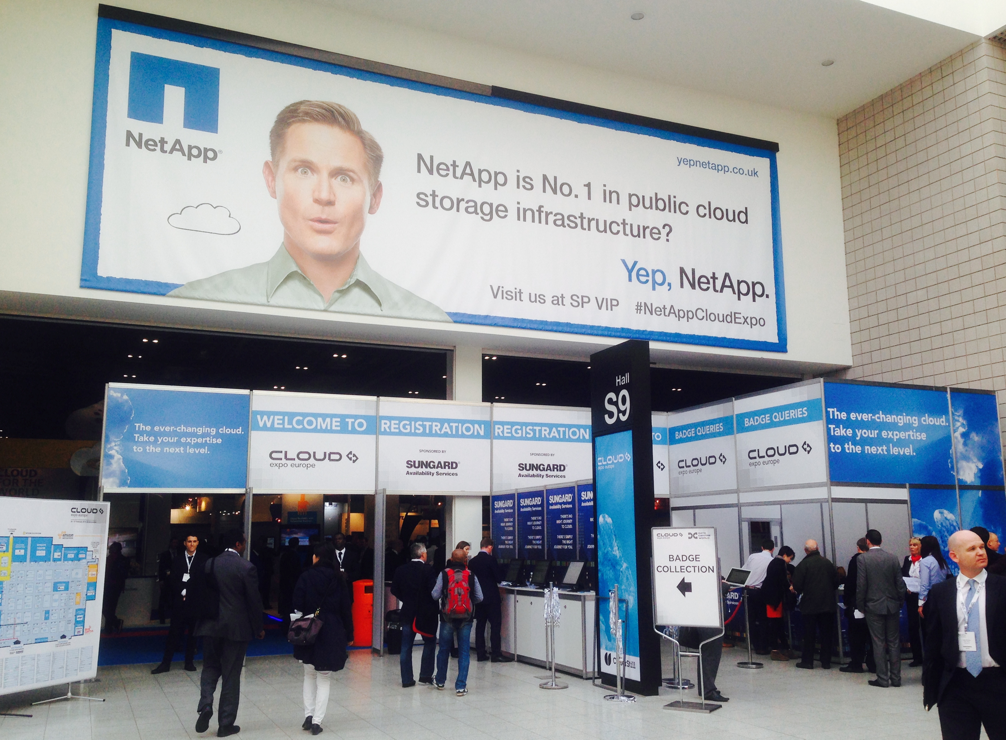
This past week our Community / Growth Manager, Brad Patterson, spoke at the European Cloud Expo in London on the topic Try Before You Buy – Successes and Misgivings in the European Cloud Ecosystem.

Also speaking were Jason Turner, director of Business development at Cedexis, António Ferreira, CEO at Luna Cloud, Lee Myall General Manager at Interoute and finally Ian Masters Sales Director at Vision Solutions who kindly moderated the round table. We shared our SaaS perspective with the audience and yet we didn’t touch on a core point— why as a part of the 2014 strategy, we have decided to move to a 100% free trial business model, dropping the freemium part of our business model completely.
Actually, this is nothing new at Evercontact – our B2C gmail service that analyzes email and updates your google contacts / address book is the only service that offers a freemium service after the 30-day trial. For our other platforms, there is a 30-day trial and then a pay wall (Google Apps, Outlook, Salesforce, Highrise and chrome plugin).
Aside: This’ll be a slightly different post in a more “transparent” direction, as our team has really enjoyed the transparency of startup blogs like Groove, Buffer, 37signals, iDoneThis, and HelpScout.
So why the change after 2 years?
First, let’s stack up the value and cost of an average freemium user in general and specifically at Evercontact:
- Advertising revenue – is not a path we’ve seen value in pursuing considering the “behind the scenes” nature of Evercontact.
- Viral growth through word of mouth has been essential in Evercontact’s growth, though we’re wondering if there was a hard pay (or refer) wall, would this have an even stronger impact on distribution?
- Help scale up technically or improve product/features. Our early adopters have been pivotal from this point of view and many of them were freemium users, so it’s been of great value, though now we’re getting to a very stable place technically / product-wise and are instead expanding into other platform.
- Data ie like Facebook sells its clients data for targeted advertising or other reporting to 3rd parties. Considering the sensitive nature of our clients’ data/professional network, this has been something we’ve decided to not pursue.
- An eventual upgrade which of course has been the prime ROI of our freemium users ie those who decided not to stay on premium after the 1-month trial, but upgraded at a later time.
And what is the cost of our freemium users?
- Bandwidth – Even if hosting and bandwidth costs continue to decline, the analysis behind Evercontact’s engine is fairly heavy so a user who doesn’t provide value as described above is a definite cost though providing little value in return considering the 5 value points above.
- Support – Over half of our support is for users on free trial and freemium which amounts to a fair amount of time for our team, and if there were no freemium users, this could be invested elsewhere while also being reduced as those who sign up knowing there’s no freemium plan are more qualified users than those who sign up knowing that they could potentially stay on a free plan forever.
- Potentially lower conversion rate due to a lack of a HARD paywall. As mentioned in the point above, a freemium plan allows for “less qualified” sign-ups as well, in direct contrast to a “credit card required at sign-up”, where conversions to trial are very low, but conversions to paying dramatically increase.
As we’ve matured the Evercontact platform we’ve had the opportunity to become more and more data-driven in our decisions, and this is at the core of why we’re dropping the freemium plan. Our 3 main reasons are:
- After nearly 3 years of service, we’ve found that over 80% of our paying clients convert in the first 40 days (most convert in a) the first few days, b) the last few days of their trial, or c) the first week they encounter the limits of freemium after the 30-day trial). The other 20% convert almost entirely due to promotions where we’ll offer 20-30% off a license for a limited time.
- All of our 30-day trial non-freemium offers (Google apps, Outlook, Salesforce, Highrise) convert at rates three times higher than our gmail service (8% vs above 25-30%). That being said, of course you do need to take into account the environment— as gmail is a free email service, when compared to the others, its clientele is also more free-oriented and less likely to invest in a paying 3rd party service. (And yet, those that pay, pay. Those that don’t, don’t, so prolonging a service for them doesn’t necessarily make sense unless you’re deriving value in another way).
- Our first clients were early adopters, and largely B2C, and yet now the B2B acquisition is much higher and accordingly the B2B revenue is over 50% of our month-to-month revenue. We want to focus on this market, and as mentioned by all of the other speakers at the Cloud Expo conference, B2B and enterprise markets are a much tougher fit with freemium models. Most enterprises would actually rather pay and have guaranteed service and support.
What’s next?
- Switch over to Free trial only, grandfathering current clients with a generous premium offer as we had originally offered them a continued free service.
- Continue to analyze the data and see what impact this change has on 1) average user cost 2) conversion to trial 3) conversion to paying 4) viral growth
- Improve the “visible” value of Evercontact. So many clients tell us that one of their favorite things about our service is that it’s so seamless, and yet this is also our greatest marketing challenge— when the product works well, it’s nearly invisible.We are looking at ways of expanding the product so that there are more visible ways that you can use it beyond it just being in the background, a dashboard that enables you to interact with your new contacts, connect with them in different ways and while benefitting you, of course also bring greater outside awareness to Evercontact.
As always, feel free to share your thoughts below on this new pivot, and if you want to learn more on the pros/cons of adopting a freemium or free trial business model, here are the best 3 articles we’ve found from Techrunch, Sixteen ventures, and Startup-Marketing.